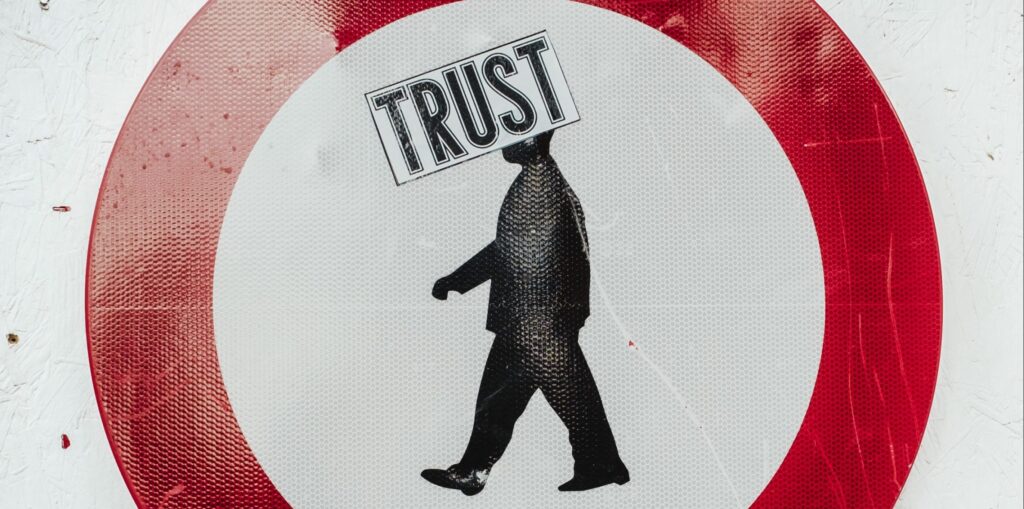LOST REASONS THAT AREN’T IN YOUR CRM:
TRUST NOT ESTABLISHED
MAY 25, 2022
In this series, I’m going to cover some lost reasons that are crucial to know about, but never measured! And I’m going to start at the beginning, where it all starts – earning trust!
Lost reasons that aren’t in your CRM
If you’ve been around in sales for some time and worked on a few CRMs, you’ve probably seen a few lost reasons in your time.
Lost reasons are the typical reasons we lose deals and are captured at the time deals are lost.
The thing is that they all start to look the same after a while; “No budget, timing off, the wrong fit, lost to competition, too small, etc.”
This stuff is nice to know, but what does it really tell you about your performance or lack thereof? Not much, I’m afraid.
In this series, I’m going to cover some lost reasons that are crucial to know about, but never measured! And I’m going to start at the beginning, where it all starts – earning trust!
When earning trust counts
In case you missed it, I recently posted a short piece on why we need to earn trust, and the sincerity required before we can do so.
There are two main scenarios in B2B sales where we need to earn trust quickly; when we’re cold calling a prospect, and when doing our initial discovery calls.
If we can establish trust early in these engagements, it will increase our chances of winning a deal later on in the process. Building trust in the beginning takes time and may slow down the beginning of the sales cycle, but it will speed up the back end, which is ideal!
Tactics for earning trust
Cold calling
When making cold calls, you only have a few seconds to establish some form of trust and is arguably the hardest stage in the process to earn trust. The basis for trust on a phone call comes down to three main points:
- Tell the client who you are: The first thing your prospect wants to know is who they are speaking to. They want to know early on what they are dealing with. Too many SDRs are duplicitous about who they are, and it’s the first part of the call. An example of a trust-building intro would be: “Hi Sam, this is Martin calling from Level180, a company that helps improve sales performance…”
- Tell the client why you are calling: With so many SDRs making prospecting calls, buyers are nervous about who is calling and why. But in this case, the why must be based on some sort of research, to show the prospect that you are not randomly calling them hoping to solicit their business, you have a purpose. This would be something like: “I see you’re the sales director for Test Software, and we’ve recently helped similar businesses to improve their conversion rates using customized coaching, is this something that could be of interest to you?”
- Focus on the impact: The reality is that it doesn’t really matter how you do what you do, prospects first want to know what’s in it for them. Focus on the impact you will have on their business. Example: “By providing call specific coaching cues, we were able to help similar software businesses to increase their conversion rates by 20% within 3 months.”
With these 3 key foundations in place, you can quickly build trust with our prospects. This will significantly increase the chances of them booking meetings with you.
Discovery calls
The role of trust in cold calling is to book a meeting with an Account Executive. The role of trust in the discovery call is to set the prospect up for success later on in the process – provided they are the right fit. Here are my key tactics for establishing trust quickly in the discovery process:
- Set a verbal agenda: This sets the prospect at ease about what your intentions are. Your verbal agenda usually consists of the following:
1. Intro to your company and what you do (including a short shpiel on why you work for your company is a nice personal touch). 3-5 minutes
2. Learn about your client. This is the bulk of your discovery call and is used to find information to build a case for your solution. Let the client know you want to learn as much as possible about their business to see if it’s a fit for your services. Let them know that you are trying to learn this information to find out if you can make an impact on their current situation.
3. Let the client know if and what synergies exist between your businesses and what the next steps are.
4.As a powerful bonus, ask the prospect what they want to get out of the call. - Use a discovery prompter: You are about to launch into a series of discovery questions to start an open conversation with your prospect. Some of these questions will seem intrusive, so it’s key that you let them know what the potential impact for them would be. For example, you could tell them, “Our clients decrease conversion rates by replicating their top performers and decreasing onboarding times.”
Conclusion
Of course, there are plenty of other tactics you could employ to help you establish trust, but these ones will get you off to a good start.
Consider these tactics the next time you are making a cold call or running a discovery call. Remember, to measure the results before and after. If this is a big change to your current set-up, it will feel unnatural and even contrived. You will be tempted to talk yourself out of it. But stick with it until you can make a fair comparison to your before and after.
Whether you’re an SDR or AE or any other role in sales, remember, through the process, listen before you speak.
Reach out if you have any questions!


